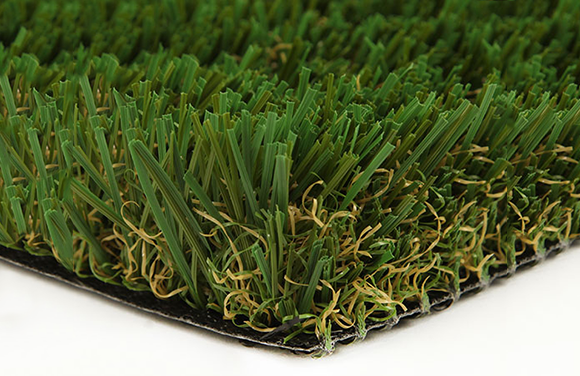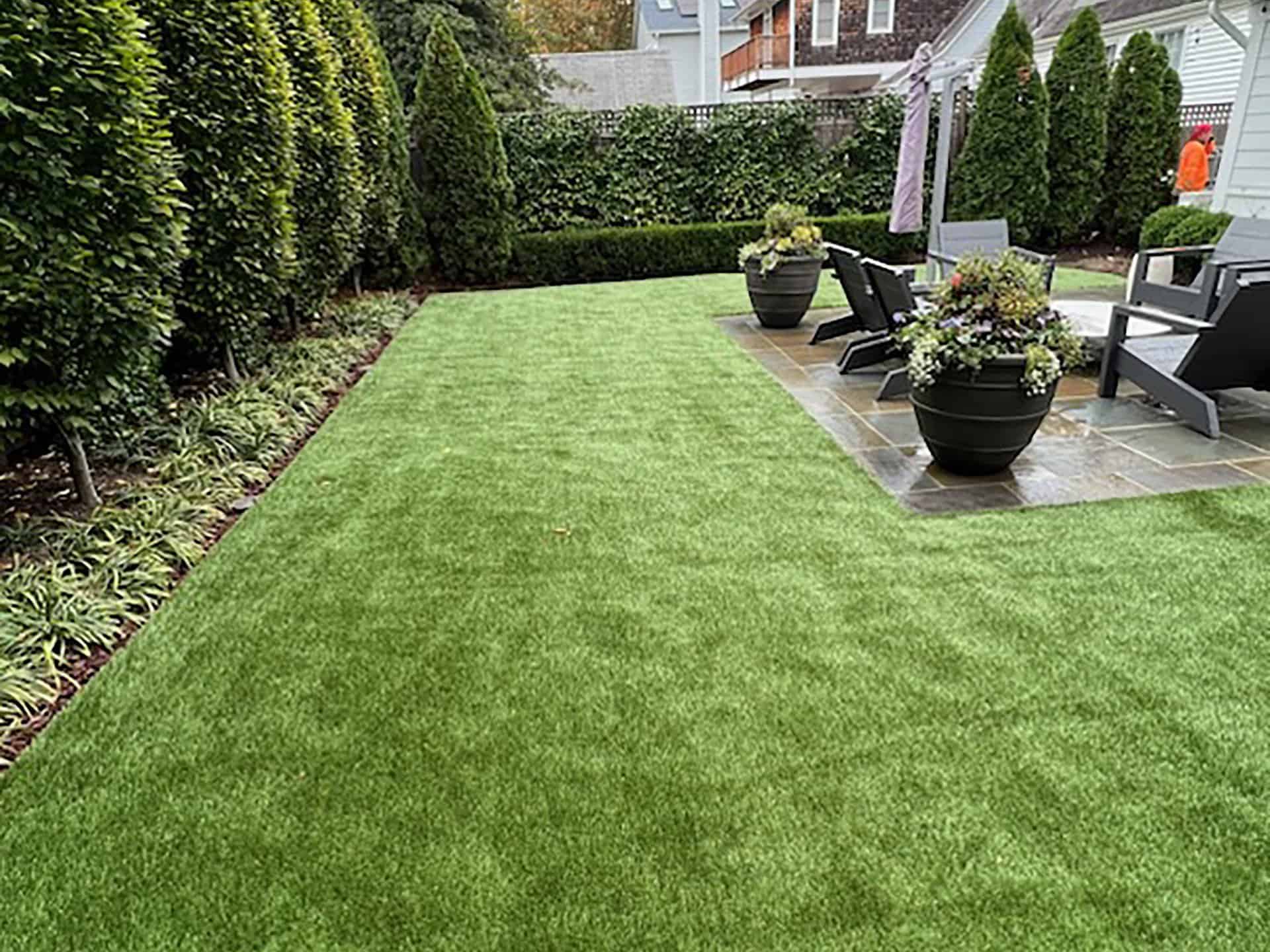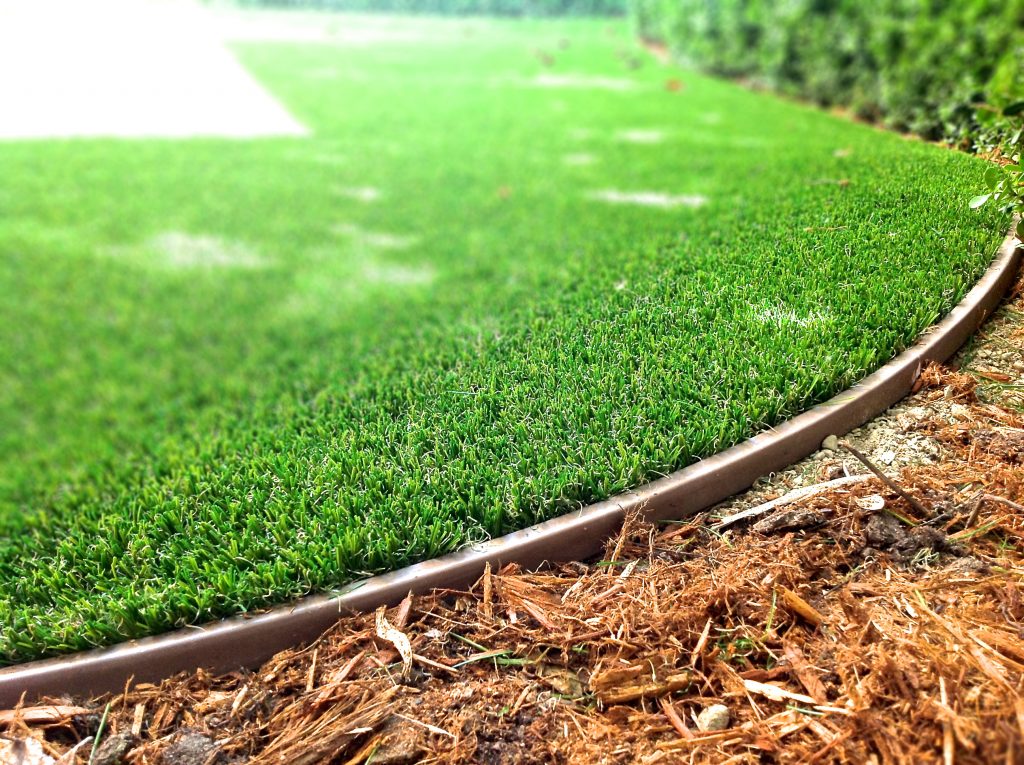Personalized Turf Installation Phoenix AZ for Homes, Businesses, and Play Areas
Personalized Turf Installation Phoenix AZ for Homes, Businesses, and Play Areas
Blog Article
Explore the Environmental Benefits of Opting for Artificial Grass Solutions
The adoption of synthetic grass options presents an engaging chance to deal with pressing environmental challenges. By dramatically lowering water usage and minimizing the application of damaging chemicals, these options not only advertise lasting landscape design yet also safeguard regional communities. The reduced carbon impact connected with decreased upkeep activities adds to a more lasting strategy to land administration. Nonetheless, the implications of these advantages expand beyond mere preservation efforts, questioning concerning their lasting influence on habitat conservation and general eco-friendly balance. Discovering these measurements reveals an intricate interplay worth considering.
Water Preservation Benefits
One of the most considerable benefits of artificial turf is its capability to preserve water. In comparison, synthetic lawn does not need watering, significantly lowering the total demand for water sources.
By eliminating the need for normal watering, synthetic grass adds to lasting landscape methods and aids alleviate the environmental effect of excessive water usage. Moreover, the preservation of water includes the reduction of overflow, which can lead to dirt erosion and river pollution.
In addition, the installation of man-made lawn enables communities and homeowners to designate water resources much more successfully, concentrating on necessary uses such as alcohol consumption water and farming. The shift in the direction of synthetic grass not only promotes responsible water usage but likewise straightens with more comprehensive environmental objectives focused on maintaining all-natural resources.
As communities progressively focus on sustainability, the water conservation advantages of synthetic grass provide a compelling instance for its fostering in property and business landscape design projects.
Lowered Chemical Usage
The change to synthetic grass dramatically decreases the dependence on chemical treatments generally made use of in all-natural lawn upkeep. Standard lawn administration generally involves the application of fertilizers, herbicides, and pesticides to advertise growth and control bugs. These chemicals can position risks to human wellness, regional wild animals, and the environment, adding to soil and water contamination.
On the other hand, synthetic grass gets rid of the demand for these damaging compounds. When installed, it requires minimal upkeep, largely including routine cleansing and irregular infill replenishment. This reduction in chemical use not just profits the immediate atmosphere but likewise adds to broader eco-friendly security. By reducing the launch of synthetic substances right into the environment, man-made grass promotes healthier soil and water systems.
Furthermore, the lack of chemical drainage related to synthetic grass installments aids shield local waterways from air pollution, sustaining marine life and maintaining biodiversity. Arizona artificial turf. As neighborhoods increasingly focus on sustainable practices, choosing for man-made lawn offers a feasible remedy that aligns with ecological conservation objectives. With this shift, building owners can enjoy rich green rooms without endangering eco-friendly health, leading the method for a much more lasting future
Lower Carbon Footprint

Furthermore, the installation of synthetic grass can result in considerable water conservation. All-natural grass require substantial quantities of water for watering, which not only includes in the carbon impact related to water removal and treatment yet check my blog likewise stress neighborhood water resources. In contrast, synthetic grass needs marginal upkeep, needing no watering, Your Domain Name consequently significantly lowering water usage and its linked power expenses.
In addition, the durability of synthetic grass adds to its decreased carbon influence. With a life-span of as much as 15 years or more, the demand for frequent replacements is diminished, leading to much less waste and reduced power intake in production and getting rid of conventional grass options. Generally, fabricated lawn presents a sustainable choice for ecologically conscious landscape design.
Habitat Preservation
Habitat conservation is a crucial factor to consider in the discussion over landscape design options, specifically when contrasting synthetic grass to natural lawn. Natural lawn lawns typically require considerable maintenance, consisting of making use of chemicals, herbicides, and fertilizers, which can negatively affect local ecosystems. These chemicals can leach into the dirt and rivers, harming indigenous vegetation and fauna and interrupting local habitats.
Artificial lawn removes the requirement for hazardous chemicals, thereby protecting nearby wildlife and preserving the honesty of surrounding environments. The setup of synthetic grass can lead to the conversion of former grass locations right into more biodiverse landscapes, such as pollinator gardens or native plant locations, which can support regional wildlife.
Eventually, the transition to synthetic grass not only preserves water and minimizes upkeep initiatives but also cultivates a much more unified connection between human activities and the all-natural atmosphere, promoting habitat preservation in the procedure.
Long-Term Sustainability
Long-lasting sustainability is a crucial aspect in evaluating the advantages of fabricated grass over traditional lawn yards. Among the most considerable benefits of synthetic grass is its toughness; it can last approximately 15-20 years with minimal maintenance, whereas natural lawn needs frequent reseeding and replacement. This longevity decreases the demand for constant sources, such as water, plant foods, and pesticides, which are essential for preserving a healthy grass yard.
Furthermore, synthetic grass contributes to a decrease in carbon emissions connected with grass treatment tools. Standard lawns often Arizona artificial turf call for gas-powered lawn mowers, leaners, and blowers, every one of which contribute to air contamination. Arizona artificial turf. In contrast, man-made grass eliminates the demand for such tools, promoting a cleaner environment
In addition, the manufacturing of artificial lawn progressively uses recycled products, boosting its sustainability profile. As makers embrace environmentally friendly techniques, the environmental footprint of synthetic grass remains to lessen.

Conclusion
The fostering of synthetic grass services provides substantial environmental benefits, consisting of significant water conservation, reduced reliance on damaging chemicals, and a lower carbon footprint. In addition, fabricated turf help in maintaining natural habitats by reducing land disturbance and promoting lasting sustainability with the usage of resilient products. Jointly, these aspects highlight the capacity of synthetic grass to contribute positively to ecological wellness and supply a feasible alternative to conventional landscape design techniques in a progressively resource-conscious world.
In comparison, artificial grass does not need watering, substantially lowering the total need for water resources. By lessening the release of artificial compounds into the ecological community, synthetic grass advertises healthier dirt and water systems.
Additionally, the installation of artificial turf can result in considerable water conservation. In contrast, fabricated grass needs minimal maintenance, requiring no watering, consequently considerably lowering water usage and its connected power costs.

Report this page